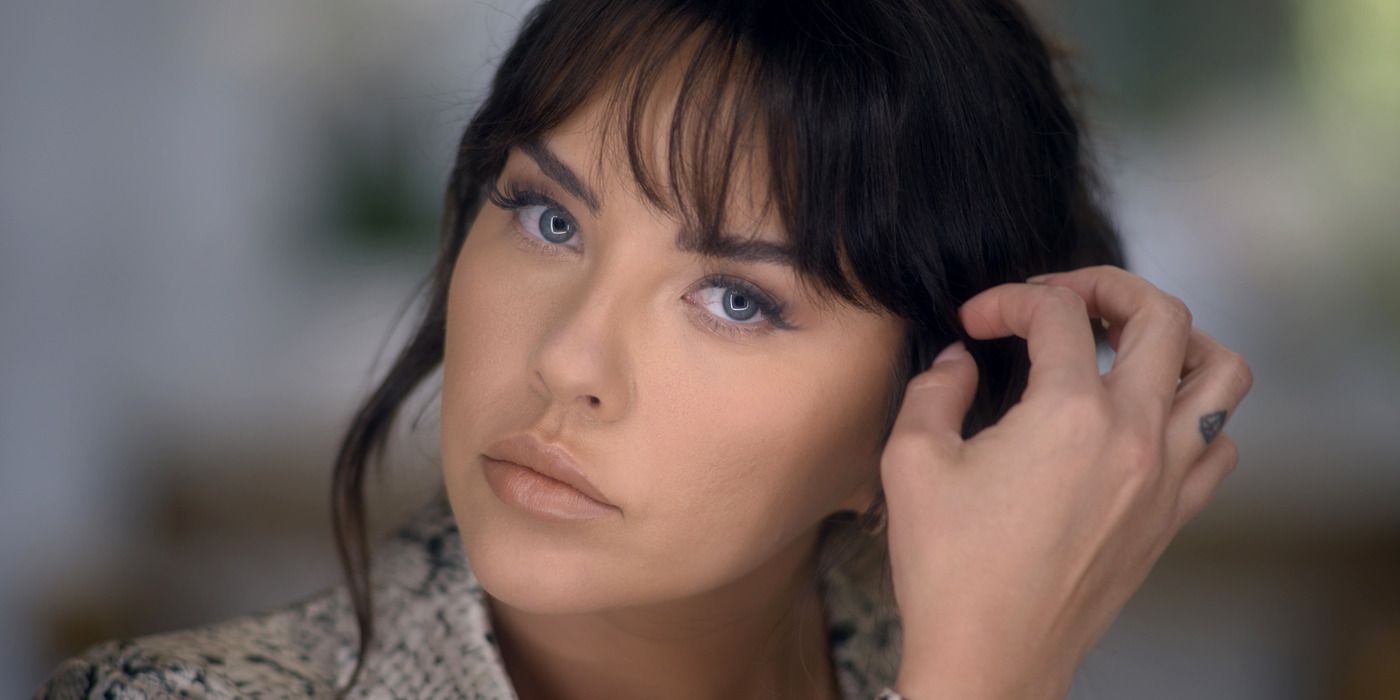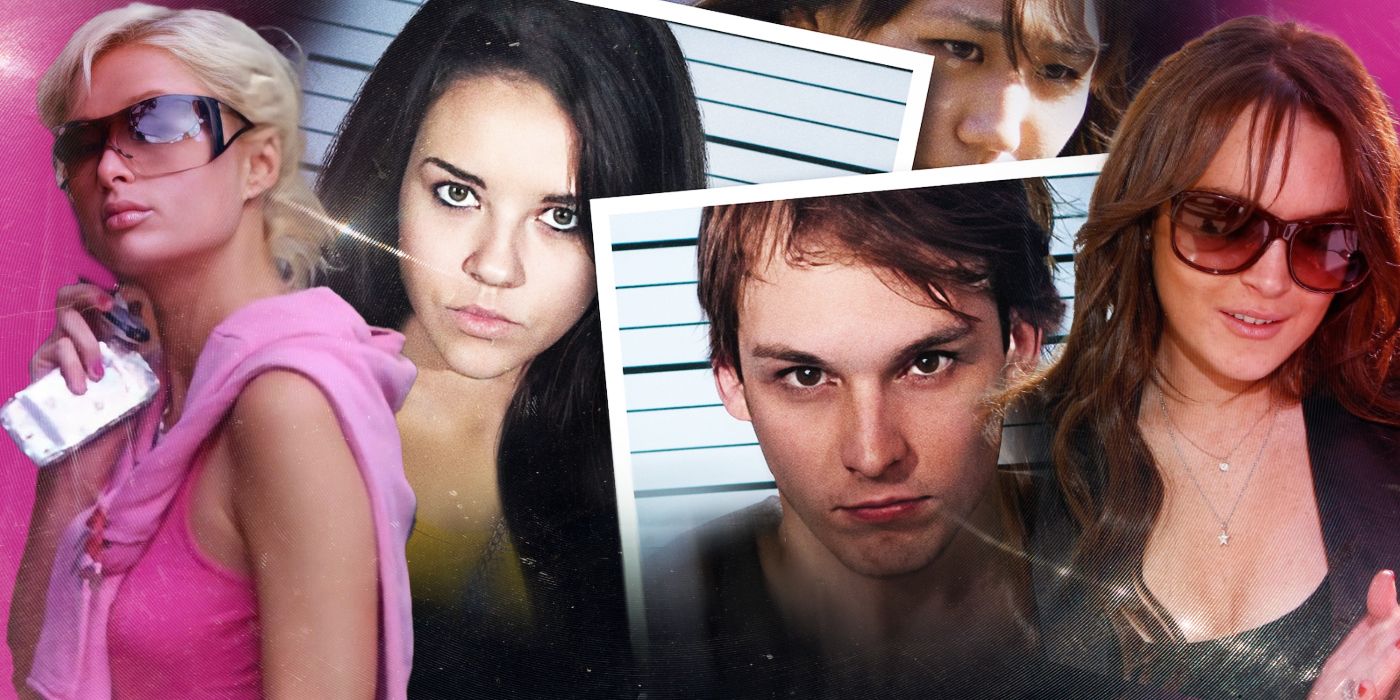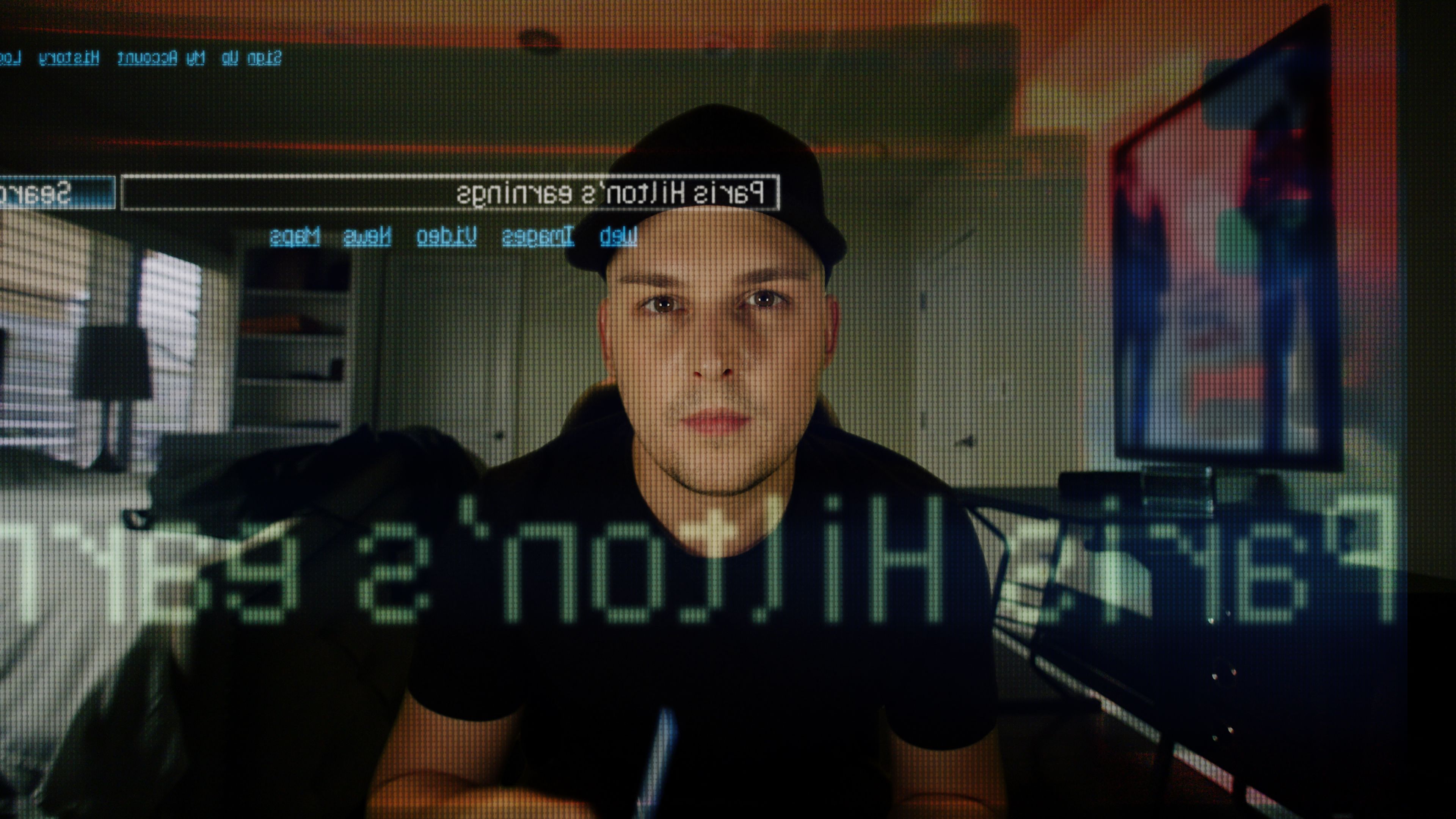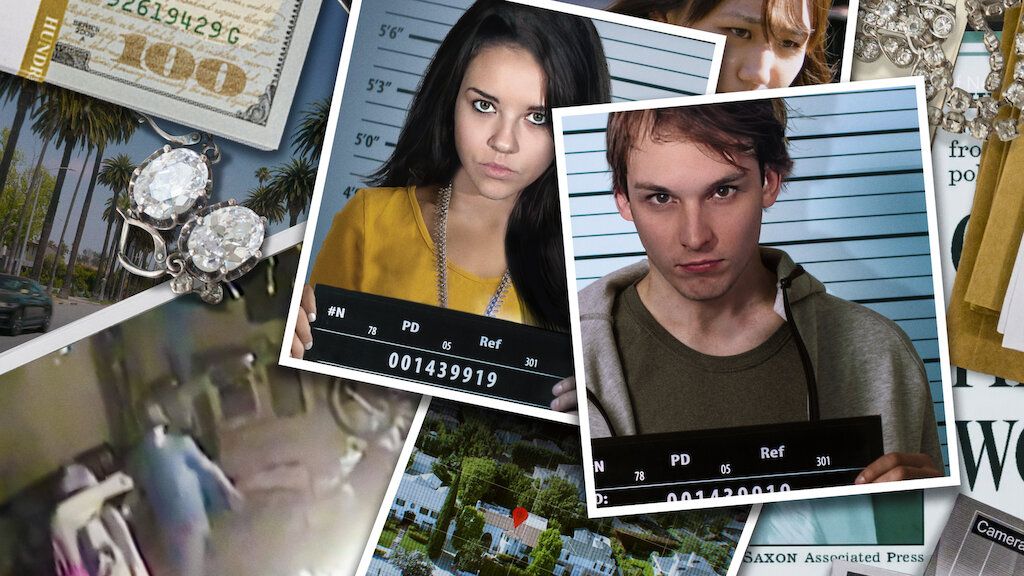In 2008, comedy writer Dan Levy met supposed sisters Alexis Neiers and Tess Taylor on the set of a low-budget teen movie. Intrigued by their wild shenanigans and backgrounds, the young up-and-comer thought the girls would be perfect for the burgeoning reality TV world. They threw together a sizzle reel, shopped it around, and E! snapped it up to fit among its existing reality portfolio that included Keeping Up With The Kardashians and Girls Next Door. Levy would get a rude awakening on the second day of filming, when Neiers was unexpectedly arrested and a multitude of truths would come to light; these girls were not in their twenties, they were not really sisters, and it turned out they had been keeping some pretty big secrets. Little did he know that he had not only brought about a minor cultural event in the form of Pretty Wild, but that his stars were at the center of one of Hollywood’s biggest crime stories.
Pretty much since its inception, Hollywood involvement in legal battles has blown any sense of reality straight out the window. From Fatty Arbuckle in the ‘20s and Roman Polanski in the ‘70s, to OJ Simpson in the ‘90s and Michael Jackson in the 2000s, there has always been an allure to celebrity crime that skews everything, from the ways in which facts are reported to public perceptions of those involved. Everybody, from witnesses and journalists to lawyers and even judges, approaches the whole thing very differently because they are suddenly the subject of media scrutiny. If ever a Hollywood crime has been influenced, or even caused, by celebrity, it is that of the Bling Ring.
How the Bling Ring Started
Nick Prugo says that his life was normal and pretty functional until he hit puberty, at which point he began to struggle with his sexuality, and with his not exactly abundant lifestyle in the shadow of his affluent Calabasas neighborhood. It was at an alternative high school that he met Rachel Lee, a stylish and confident young troublemaker with whom he quickly became best friends. Together they partied and pressed their noses against the glass of the Hollywood elite, something Prugo had had a small taste of earlier in his life as a child actor. According to Prugo, Lee introduced him to robbing the wealthy; first they would raid unlocked luxury cars for credit cards and other valuables, and eventually took the cars themselves. This not only helped them get their kicks, but also their highs, and whenever they ran out of drug money, they would go on another ‘job’. But this petty criminality would kick into overdrive when they hit upon the idea of using celebrity gossip sites, which at the time were booming, to line up bigger targets, ones so rich that they would surely never miss a couple of hundred thousand dollars’ worth of bling.
Celebrity culture in 2008 was going through a rapid transformation thanks to the internet. Where in previous times, famous people were buried under layers of legal teams, security and PR people, social media and gossip websites were breaking down the barriers between celebrities and the unwashed masses. Representatives no longer needed to be approached for comment, as stars could give their thoughts in real time via Twitter; fans didn’t have to find out in magazines what stars had been up to after the fact, because websites offered frequent live updates and pictures. A massive industry had emerged in the form of celebrity gossip, giving birth to such figures as Perez Hilton and TMZ, and many lower-rung starlets used such outlets to their advantage.
It was the era of Paris Hilton and Britney Spears arriving at LA nightclubs with no panties on, of unflattering shots of Nicole Richie and Lindsay Lohan that captured their benders for the world to laugh at, of cheap magazines counting down celebrities’ worst bikini bodies and making fun of their acne and cellulite. It was an era of simultaneously tearing people down, and building them up. Privacy was becoming a thing of the past, and anybody in the public eye was basically fair game. At the same time, the nature of celebrity itself was being called into question: the gossip columns weren’t interested in talented people who had earned their status, who could write or sing or act; they were interested in socialites, people who would be dubbed “famous for being famous”, and the boom in reality TV was creating such people on a daily basis. From the megawealthy like the Osbournes and Paris and Nicole, to game show participants and kiss-and-tellers, celebrity was suddenly accessible from all sides: people could see it and, if they were so bold, even break into it themselves.
Which Celebrities Were Targeted by the Bling Ring?
Prugo and Lee were children of this generation, and they wanted a bite of the cake. Growing up in LA, surrounded by wealth and beauty, it felt natural for them to aspire to such questionable heights. The paths of their celeb fascination and petty theft would collide thanks to gossip sites, and they realized that they really could attain these riches; all it took was a few internet searches and a hell of a lot of nerve. With the news that Hilton was out of town for some event, they found her address, scoped the place, and decided to rob it. It was just their luck that the door would be left unlocked and, later on, a key was even left under the porch mat. Sure enough, so crafty were they, and so loaded was Hilton, that she didn’t even notice anything had been taken. This gave the duo all the courage they needed to make this a lifestyle.
At school, Prugo had befriended Taylor, a wannabe model with her own share of home-life struggles, through whom he would make friends with her surrogate sister Neiers. Neiers’ own home life was unconventional: according to her book Recovering From Reality, her father Mikel, a director of photography in television who notably worked on Friends, was a philandering alcoholic and her mother Andrea, a former model and bit-part actress, was a hippie chick who chased enlightenment and fame in equal measure. By her teens, she was addicted to opioids and looking to get into the entertainment industry herself, spurred on by her mother. Although their accounts of their relationship and the night in question differ, Prugo and Neiers agree that they were both there on the night that Orlando Bloom’s house was burgled in July 2009.
Around this time, however, Neiers and her family were gearing up to shoot the reality show that a chance encounter with Dan Levy had brought to fruition, Pretty Wild. What was initially meant to be a look into the lives of these hippy-dippy homeschooled wannabes in LA took a sharp left and went on to chronicle Alexis’ struggle to stay out of prison. For producers, this was the opportunity of a lifetime to capture TV gold at the perfect point in this reality/celebrity zeitgeist; for Neiers, so much media attention would prove to be her undoing — and eventual rebirth — cemented by a now-infamous Vanity Fair article by Nancy Jo Sales.
“Nancy Jo, this is Alexis Neiers calling!” has been called the voicemail heard around the world. Right or wrong, Sales turned in a scathing article about the teens’ escapades, characterizing them as vapid, privileged brats who thought of life as one big runway. Amidst heavy heroin use, producer manipulation, fractured family relationships and intense media scrutiny, this article would push Neiers to a meltdown, which was inevitably caught on camera, take after take, by the show’s producers. In the unforgettable scene, she makes repeated attempts to record a voicemail to Sales, in which she expresses “how disappointed I am in your story.” Between technical issues, unhelpful interjections from Andrea, and a diatribe over a pair of little brown kitten heels (“Twenty-nine dollars!”), it takes an increasingly hysterical Alexis several goes before she signs off with, “Have a nice life, goodbye” and Andrea sobs dramatically about how beautifully her daughter expressed herself. As real and understandable as Neiers’ despair was at the time, it was exactly what producers, the network, the public and even the courts needed. Here was a stupid little rich kid crying because she got caught, and wasn’t it hilarious to see her get her comeuppance? A conviction was a sure thing.
Pretty Wild was one of many small blips on the reality TV landscape of the late 2000s, one that was received and is remembered in a number of different ways. To some viewers, it was amusing to watch the unraveling of a fame-whoring family; to some it was a guilty pleasure to unwind to; to others, it was a curiosity because of Alexis’ brush with the upper echelons of Hollywood, or a genuinely aspirational look at the life the young and beautiful in LA. Years and many revelations later, it is an interesting little capsule of time that is somewhat less cynical and overproduced than the reality TV of today. It is fascinating to consider how much things have changed, from beauty standards to social media to the concept of celebrity. It is also pretty startling how obviously under the influence Neiers is in some scenes — a fact that supposedly crept unnoticed right past the show’s producers.
The show ended abruptly after nine brief episodes — which had explored such novelties as modeling shoots, bra shopping, birthday parties and mingling with guys — with Alexis pleading no contest and being sentenced to jail. It was a big hit for the network, although it was not renewed for a second season, and had an undeniably shattering effect on the Neiers family. However, as explained both in her book and her podcast, it would turn out to be the reset Alexis needed for her life. After many heroin-related traumas, she got sober, met her husband in a recovery group, and went on to have two children, train as a drug counsellor and doula, and dedicate her life to helping others, just as she promised she would do on the steps of the courthouse years before, which many scoffed at. “I think this situation was attracted into my life because it was supposed to be a huge learning lesson for me to grow and expand as a spiritual human being. I see myself being like an Angelina Jolie but even stronger, pushing even harder for the universe and for peace and for the health of our planet,” Vanity Fair quotes her.
Where Is the Bling Ring Now?
There were a number of other Bling Ring participants who have shunned public and media attention as much as possible: Diana Tomayo, Courtney Ames, Johnny Ajar and Roy Lopez Jr. were all brought into the group via either Prugo or Lee, but their involvement was eclipsed in the media by that of Prugo and Neiers. Neiers is the only one of the group to have maintained any level of public profile in the years since, the others never really coming out to tell their side of the story. Because of this, speculation has been rampant and plenty of artistic license was taken when it came to Sofia Ford Coppola’s movie The Bling Ring in 2013. The close involvement of Nancy Jo Sales and even Brett Goodkin, the highly-questionable detective on the case, muddied the waters and further skewed what is known of the true story into its own LA fantasy. While a fun and thoroughly enjoyable movie, it should not serve as anyone’s education on the case.
The Real Bling Ring: Hollywood Heist is a documentary series streaming now on Netflix. With the involvement of Neiers and Prugo, along with lawyers, detectives and cultural figures relevant to the case, it promises to be a more fleshed-out version of the story than we have ever received before. Although it is unlikely that the full truth will ever be reached in the story of the Bling Ring, this series appears to be looking at it from every side possible, to explore the cultural and personal intricacies of the crimes, and expose it, as LA Deputy District Attorney Christine Kee describes it in the trailer, as “like a fucked up LA greek tragedy.”



